This week I am going to concentrate on events linked to 6 July, but first, as promised, herewith details of Dr Ben Marsh’s talk on Tuesday 20 July at 7pm online through Teams, which promises to be a fascinating exploration and very timely considering the political, social and cultural climate we live in today.
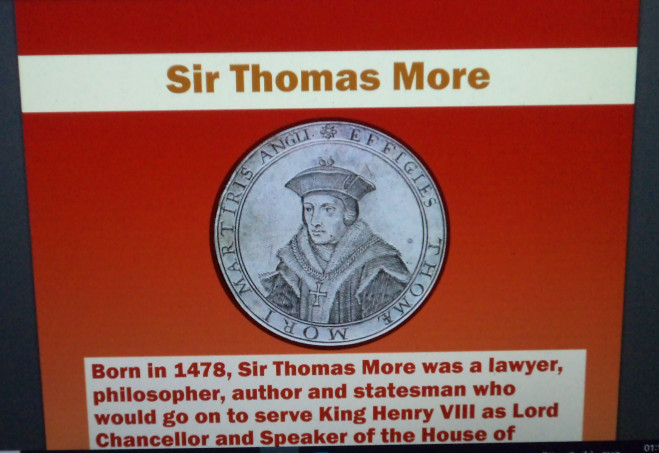
Ben, who is a Reader in American History at the University of Kent, is currently focusing on four projects including an exploration of Kent’s historic links to slavery and empire, and the development of a ‘decolonial overlay’ digital tool that might support clearer and more nuanced understanding of heritage collections’ links to the legacies of empire and slavery. Knowledge gained from these projects will feed into his lecture entitled ‘Gateways to Empire: Figuring Out Kent’s Black Histories, c.1550-1800’. Furthermore, as he says, “In this paper I will present some of the insights from my co-authored chapter with Professor David Killingray about racial diversity across maritime Kent. My talk will consider how Kent operated as a gateway for imperial expansionism from the late sixteenth century, and how economic and social links brought new populations and opportunities to communities. Drawing on ongoing research into the arms of the Juxon family, I will also reflect on how commerce and familiarity were mapped onto structures of power, prestige, and the built environment.”
The chapter mentioned in Ben’s summary will be part of Maritime Kent through the Ages: Gateway to the Sea that is due to be published this September by Boydell, so his talk will also act as a taster for those interested in this exciting subject. Please see the publisher’s website and this mammoth collection will be available through the CCCU Bookshop: https://boydellandbrewer.com/9781800103054/maritime-kent-through-the-ages/ and features several pieces by CCCU staff.
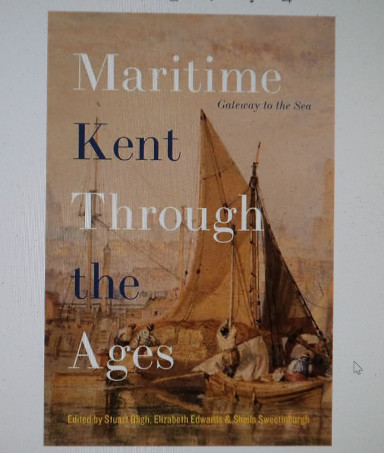
For those wishing to see Ben’s presentation, which is free and booking is not required, this is the link: https://teams.microsoft.com/l/meetup-join/19%3ameeting_NDg2YWU3NzEtYjU4OS00MjM2LTk5ZDYtNWM3ZGY2ODZiMjNl%40thread.v2/0?context=%7b%22Tid%22%3a%220320b2da-22dd-4dab-8c21-6e644ba14f13%22%2c%22Oid%22%3a%225438ffb7-ff66-44f6-9ccf-cf504309571b%22%2c%22IsBroadcastMeeting%22%3atrue%7d&btype=a&role=a
For those not familiar with Teams, don’t worry and here are joining instructions: as soon as you click on the link or open it in your browser – if you do not have Teams installed, firstly click ‘cancel’ when it prompts you to open Microsoft Teams; second, select ‘Watch on the web instead’, finally select ‘watch anonymously’ unless you have a Teams or Microsoft account. You will see the event has started or be told, it has not started yet. If the latter, wait for the event to start. There is no limit to the number of times you can retry to enter.
I’ll be reporting next week on Dr Claire Bartram’s meeting at Dover later today for her IHR Centenary Celebration where those involved from across the Faculty will discuss onsite what this September event will comprise. Which leads me nicely on to matters for this week because from medieval times Faversham was associated with Dover. As readers may remember, the Centre is part of the Faversham Magna Carta Advisory Group for the town’s new exhibition at the Market Place heritage hub in the centre of Faversham. We have been working with members of the Town Council and experts in the town, such as Dr Justin Croft and Darius Wilson, as well as Sarah Stanley, who leads the Kent Archives Service at Maidstone, and matters are now coming together. Consequently, as well as Faversham’s copy of the 1290 Magna Carta, the display is likely to include at least one more of the town’s charters, that from Henry VIII, plus the Custumal Book and artefacts like the moot horn and one of the Faversham maces. More is due to happen over the summer and when I have news of its opening, I’ll let you know.
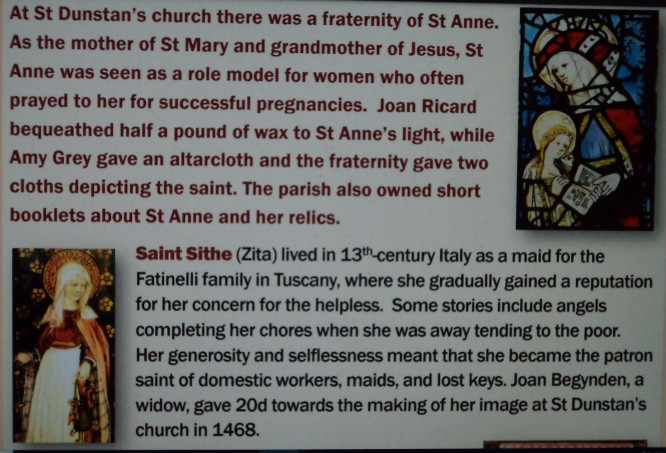
As I am sure many of you know, 6 July has a special resonance for St Dunstan’s church in Westgate, just outside Canterbury’s ancient liberty because it was the day on which Sir Thomas More was executed for high treason in 1535. His severed head was rescued by his daughter Margaret Roper, the wife of William Roper of St Dunstan’s parish, and she kept it with her during the remainder of her life and thereafter was buried with it in the Roper vault at the same church. Consequently, Sir Thomas More is one of the seven pop-up exhibition banners that we at the Centre are hoping to present to the church this month – they are currently being printed – and it seems especially appropriate because the church has an annual service to commemorate More’s death. Without giving too much away regarding the subjects of the other six banners, the Ropers as the premier family in 16th-century St Dunstan’s do feature elsewhere, but we also showcase several of the saints which were venerated in late medieval St Dunstan’s and other contemporary aspects of church life.
Today St Dunstan’s parish church has strong links to St Mildred’s church, for which we created the earlier set of history banners, and as anyone who knows Canterbury will appreciate this latter church is in the shadow of Canterbury Castle. So even though this may be somewhat tenuous, it was great to be part of the revitalised Friends of Canterbury Castle group which met on 6th July. Having elected Connie Nolan a city councillor as the chairperson and other officers and trustees, the idea is to go for formal charitable status. One of the key aims of the Friends is to seek to advise the city council, as owners, about how best to restore the castle keep and give it a bright future as a historic building within the city’s heritage offering for visitors and residents alike. Again, I’ll bring you more on this as things develop.
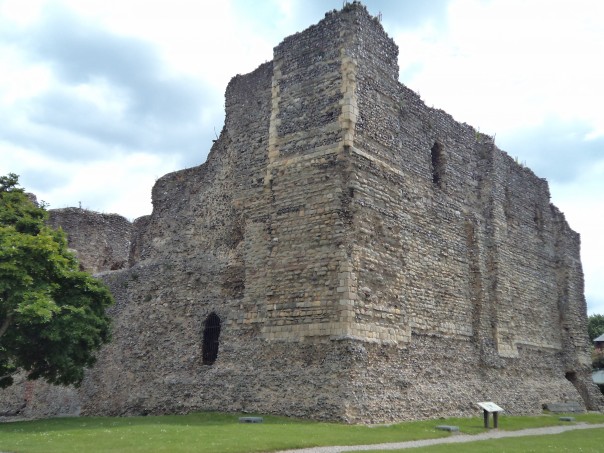
My third 6th July also concerns Canterbury because as the eve of the feast of the Translation of St Thomas in recent years the nearest Saturday has been used to stage the Canterbury Medieval Pageant. Even though this year due to Covid the Pageant has been moved to be part of the Canterbury Festival in October, I thought I would mention that in early 16th-century Canterbury the 6th July was a major date in the civic calendar, as well as that of the cathedral. According to the surviving sources, if the London waits were not in attendance ‘the gyantes’ were at the head of the procession of the city’s Marching Watch. Such artefacts may have been used at Sandwich in the town’s St Bartholomew’s day celebration and large puppets are also recorded in London, Norwich and Coventry. Close behind the giants were the first of the gunners and pike men and then the first of the five pageants, the ‘Salutacyn’ (Annunciation). Among those before the second pageant, which depicted St George, were forty ‘byllmen’ and the Ridingate constable, and a similar contingent followed with the Wor[th] gate constable, who preceded the third pageant of the Nativity. Thereafter archers replaced byllmen with first the constable of Northgate and then his Westgate counterpart, the former preceding the Assumption pageant, the latter St Thomas. This pageant was followed by another group of archers, the other constables, and the great two-handed sword, with the mayor and aldermen leading the rearguard.
It is possible to get a feel for how important this procession was to Canterbury’s leading citizens from the rules governing its conduct. These included the regulation that the aldermen were to come on horseback and, depending on the mayor’s decision, were either to wear their scarlet and crimson gowns or their armour. Moreover, their position towards the rear of the Marching Watch is indicative of their superior role within the city, as is the presence of the sheriff close behind. The placing of St Thomas as the fifth and final pageant may be similarly hierarchical, a reflection of its special nature because it was seemingly the only pageant paid for by the civic authorities, and it is similarly worth remembering that the city’s seal at this time had a representation of the archbishop’s murder.
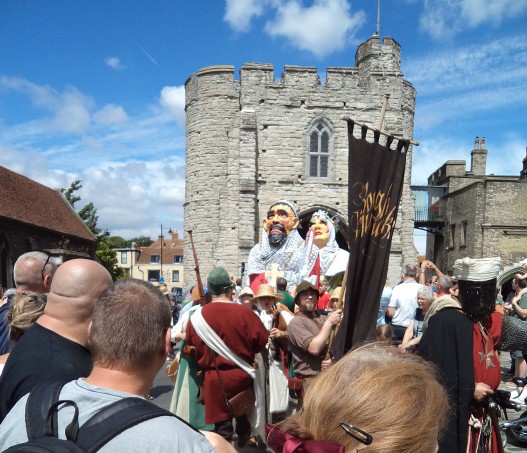
Even though the Pageant today is not as spectacular and doesn’t involve gunpowder as it did in early Tudor Canterbury, the giants are there and in 2021 a new giant St Thomas will be joining Queen Eleanor and King Henry II all being well. Moreover, the use of drama has been part of recent Pageants as well as the presence of ‘knights’, a substitute for the mounted mayor and aldermen, but what has been missing since 1536 is the giant Dover candle. I am not sure how this could be revived and, of course, there is no shrine in Canterbury Cathedral where it could be displayed as Dover’s votive offering to St Thomas, but it is good to remember this link between Dover, Canterbury and Becket.
Next time Dover will again feature, but much of the rest will be on west Kent because Janet Clayton will be giving a presentation to the Kent History Postgraduates and the Lossenham wills group are also meeting next week.
 Centre for Kent History and Heritage
Centre for Kent History and Heritage Sheila Sweetinburgh
Sheila Sweetinburgh 1115
1115

